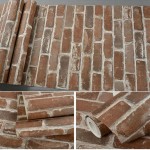White Oak Flooring Stains: A Guide to Enhancing Your Home's Beauty
White oak flooring is a popular choice for homeowners due to its durability, classic look, and adaptability. However, the natural color of white oak can sometimes appear bland or too light for certain design aesthetics. This is where white oak flooring stains come into play. Staining white oak flooring allows homeowners to customize the color and enhance the wood's natural grain patterns, creating a unique and personalized look for their home.
This article will delve into the world of white oak flooring stains, exploring different types, factors to consider when choosing a stain, and the overall process of staining your floors. Whether you're looking to achieve a warm, traditional look or a sleek, modern aesthetic, understanding the options and techniques available can help you make informed decisions and achieve your desired results.
Types of White Oak Flooring Stains
White oak flooring stains are categorized based on their chemical composition and the finish they produce. Understanding these classifications is crucial for selecting the right stain that suits your specific needs and preferences. Here are some of the most common types of stains:
- Oil-based stains: These stains are known for their deep penetration into the wood, resulting in rich, vibrant colors. Oil-based stains are also durable and resistant to fading, making them a popular choice for high-traffic areas. However, they require more time to dry and can emit strong fumes, making ventilation essential during application.
- Water-based stains: Water-based stains are becoming increasingly popular due to their low VOC content, making them environmentally friendly and safer for indoor applications. They also dry quickly and have minimal odor. While water-based stains offer good color penetration, they may not achieve the same depth and richness as oil-based stains.
- Gel stains: These stains are thicker and slower-drying than other types, making them ideal for achieving a more consistent color on uneven surfaces. Gel stains are particularly useful for filling in knots and imperfections in the wood, providing a smoother finish. However, they require more time to dry and may require multiple coats for optimal color.
- Acid stains: Acid stains are used to create unique and dramatic color effects, often producing a distressed or "weathered" look. They react with the wood's tannins, creating a mottled pattern that can add character to the flooring. However, acid stains can be unpredictable and require a skilled applicator to achieve the desired results.
Factors to Consider When Choosing a White Oak Flooring Stain
Selecting the right stain involves taking into account several factors that will directly impact the final look and feel of your flooring. Carefully considering these aspects will ensure you achieve your desired aesthetic and longevity:
- Color: Determine the desired color for your flooring. This will be influenced by your overall interior design style, furniture, and personal preferences. Explore various color swatches and consider how the chosen color will work within your existing décor.
- Finish: Stains can produce different finishes, ranging from matte to semi-gloss to high-gloss. Consider the level of sheen you desire for your flooring, taking into account the amount of light and traffic your space receives.
- Durability: If your flooring is located in a high-traffic area, consider opting for a stain that offers good durability and resistance to scratches and wear. Oil-based stains generally provide greater durability than water-based stains.
- Application: The chosen stain should be compatible with your application method. Consider your level of experience with staining and whether you will be applying the stain yourself or hiring a professional.
- Safety: Ensure the chosen stain is safe for your environment and health. Opt for low-VOC stains, especially if you have children or pets, and always follow safety precautions during application.
Staining White Oak Flooring: A Step-by-Step Guide
Staining white oak flooring is a relatively straightforward process that can be done by homeowners with a basic understanding of woodworking techniques. However, it requires careful preparation and attention to detail to achieve a professional-looking finish. Follow these steps for a successful staining process:
- Prepare the floor: Thoroughly clean the floor to remove dirt, dust, and debris. This will ensure proper adhesion of the stain. If the floor has a previous finish, sanding may be required to remove it.
- Apply the stain: Use a brush, roller, or cloth to apply the stain evenly to the floor. Follow the manufacturer's instructions for drying time and application technique.
- Apply a sealant: After the stain has dried, apply a sealant to protect the finish from wear and tear. Polyurethane is a popular choice for its durability and water resistance.
- Let the sealant dry: Allow the sealant to dry completely before walking or placing furniture on the floor. The drying time will vary depending on the type of sealant used.
The process of staining white oak flooring offers a rewarding experience, allowing you to personalize your home's aesthetic and enhance the beauty of your floors. By understanding the different types of stains, considering the relevant factors, and following a well-planned approach, you can achieve exceptional results that will last for years to come.

What Color Should I Stain My Wood Floors

Time To Choose A Stain Color For White Oak Flooring Mommy Max

The Best Stain Mix For White Oak Hardwood Floors House With Home

Choosing Hardwood Floor Stains

Choosing A Floor Stain For Finish In Place White Oak

Our White Oak Floors The Natural Finish Stain Decision Meg Leonard Design Lifestyle Co

Minwax Floor Stains For White Oak Flooring Far Left Just Polyurethane Second From Gray Middle Weathered Floors

Choosing Hardwood Floor Stains

Our White Oak Floors The Natural Finish Stain Decision Meg Leonard Design Lifestyle Co

Help Choosing Stain For White Oak Floors Hardwood Colors
Related Posts








